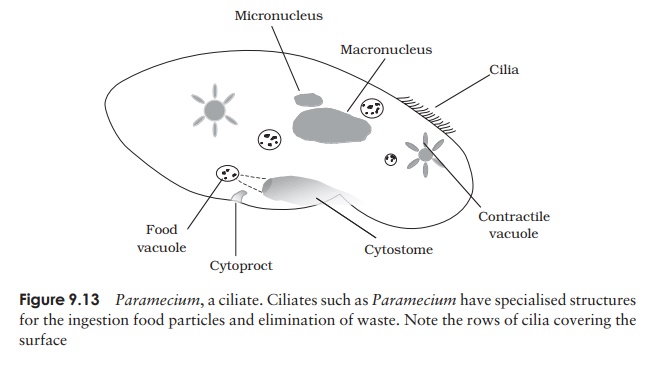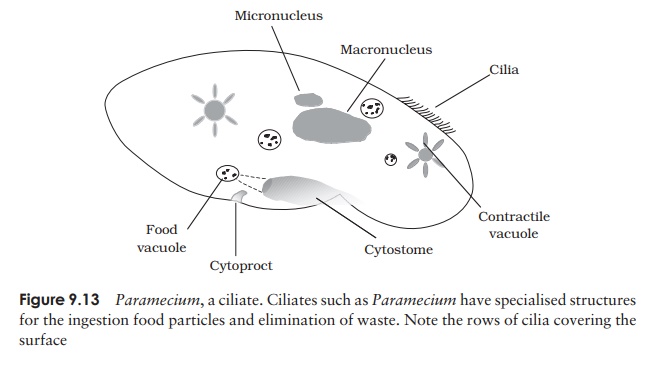Chapter: Essential Microbiology: Protista
Ciliates (Ciliophora) - Protozoa

The ciliates
(Ciliophora)
The largest group of protozoans, the ciliates, are
also the most complex, showing the highest level of internal organisation in
any single-celled organism. Most are free-living types such as Paramecium (Figure 9.13), and as the
name suggests, they are characterised by the possession of cilia, which may be
present all over the cell surface or arranged in rows or bands. They beat in a
co-ordinated fashion to propel the organism, or assist in the ingestion of food
particles.
A unique feature of the ciliates is that they possess
two distinct types of nuclei:
·
macronuclei are concerned
with encoding the enzymes and other proteins requiredfor the cell’s essential
metabolic processes. They are polyploid, containing many copies of the genome.
·
micronuclei, of which
there may be as many as 80 per cell, are involved solely insexual reproduction
by conjugation.
As might be expected, removal of the macronucleus
leads quickly to the death of the cell; however, cells lacking micronuclei can
continue to live, and reproduce asexually by binary fission.

Most ciliates possess a specialised ‘mouth’ structure,
the cytostome, through which food
particles are ingested (Figure 9.13). The beating of cilia directs them to a
cytopharynx, a membrane-covered passage or tube, which enlarges and detaches to
form a food vacuole. Fusion with lysosomes and digestion by enzymes occurs as
described earlier. Undigested particles are ejected from a region on the
surface (the anal pore or cytoproct).
As well as cilia, some members of the group have trichocysts projecting from the cell
surface, harpoon-like structures that can be used for attachment or defence.
Some ciliated protozoans are anaerobic, such as those
found in the rumen of cattle. The only ciliate known to cause disease in humans
is Balantidium coli, which causes a
form of dysentery.
Related Topics